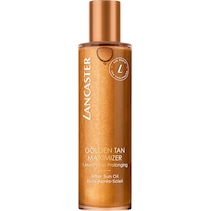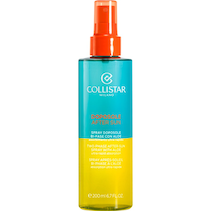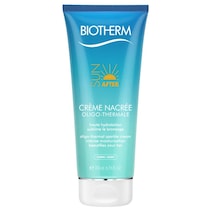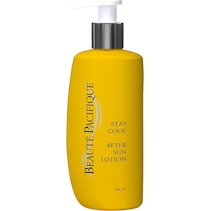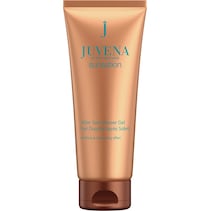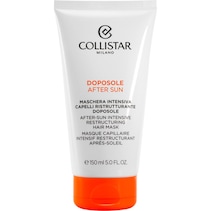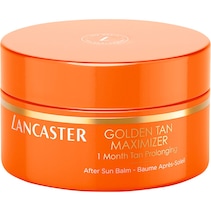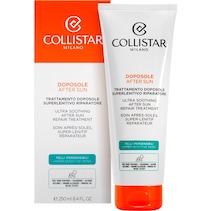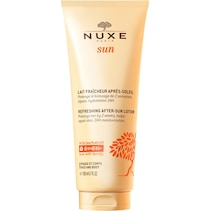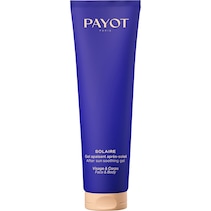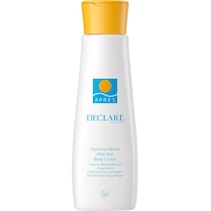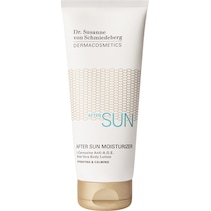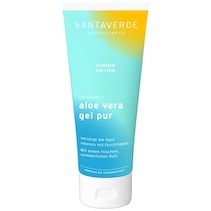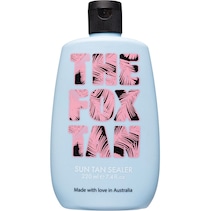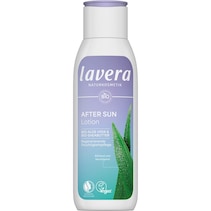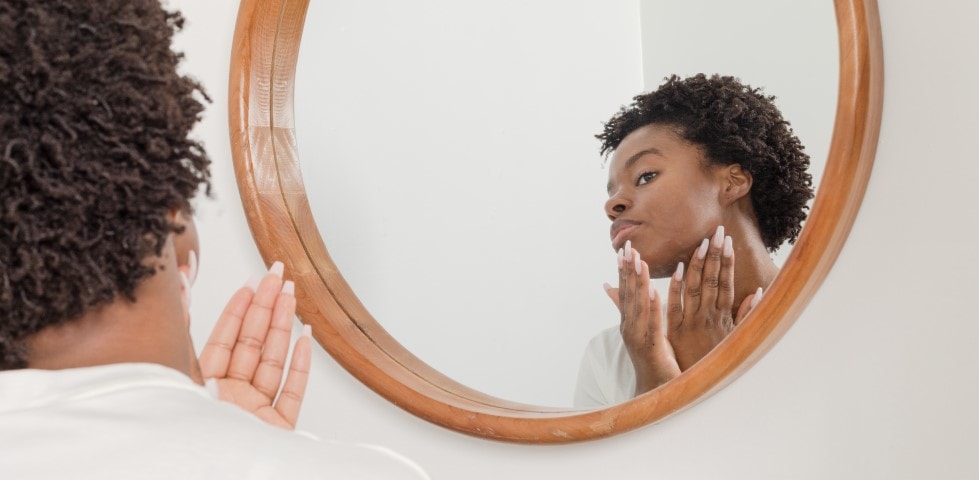
Treating sunburn – effective tips for relief
Every case of sunburn means long-term damage to the skin. It is therefore extremely important to treat red, uncomfortably itchy and burning areas of skin quickly and expertly. It is possible to minimise skin damage with professional cooling products and creams. Here, we have put together the best tips for sunburn for you.
16 June 2023 • 3 min. reading time
Table of contents
What happens when the skin gets sunburnt?
The period in which your skin can protect itself from UV rays is short. It is mainly those with pale skin who burn quickly in the sun. Your body produces smaller quantities of the protective pigment melanin, which is responsible for the skin changing colour.
Whether it occurs on the face, lips, ears, décolletage, nape of the neck, arms or legs – sunburn can affect every part of your body. The UVB rays of the sun trigger inflammatory reddening of the skin – the technical dermatological term for which is erythema. In addition, they activate the melanocytes of the outermost skin layer, the epidermis, and trigger increased production of melanin that is supposed to protect your skin from further UV rays.
Sunburn – stages and symptoms
Light, first-degree sunburn
Unfortunately, the term "healthy tan" is misleading. Suntanned skin is already irreparably damaged. If the skin is showing redness and light swellings, it is important that you get out of the sun immediately. You should preferably go indoors. This is because even in shady spots in the open air, UV rays continue to surround you.
Severe second-degree and third-degree sunburn
Burning redness and painful swelling are other signs of second-degree sunburn, which also affects deeper skin layers. If the skin forms blisters, there is danger of a serious burn and you should seek medical help immediately. Frequently, severe sunburn is accompanied by skin peeling and sunstroke. The symptoms are headaches, dizziness, nausea, vomiting and/or fever.
How should I treat sunburn?
If your skin shows signs of sunburn, you should: strictly avoid further UV rays. Depending on the severity of the symptoms, household remedies, skincare products and medicines can relieve your complaints and help you feel better.
Tip
Before you treat sunburn with household remedies and special after sun products, you should – if possible – rinse the area with cool water to wash off traces of sun cream and sweat. To avoid rubbing the skin, which further irritate sunburnt areas, it is sensible to dab the skin with a soft towel or soft cotton cloth.
Help for light sunburn
If your skin is slightly reddened, feels warm and tingles uncomfortably, you can cool it with one or more cool packs, wrapped in thin tea towels or cotton cloths. Important: to avoid frostbite, never lay them directly on the skin. If you’ve got a cucumber in the fridge, you can slice it and place the slices on the affected areas of skin. The cucumber slices are not only pleasantly cooling, they also soothe the inflammation on the skin. If only small areas of skin – e.g. on the ears or lips – are affected, a teabag containing black tea infused in hot water and cooled off in the fridge will have an anti-inflammatory effect.
You can treat large areas of skin with a home-made cold compress using curd cheese as well as soothing and moisturising pure aloe vera gel. Special after sun products are formulated to reduce redness and supply the skin with a high level of moisture. Due to their handy packaging, they are easy to keep in any bathroom and handbag. With light sunburn, the reddening of the skin will have reduced significantly after one day and, in the best case scenario, will have even disappeared completely.
Help for severe sunburn
Painkillers give relief from pain in the affected areas of skin – mainly when in contact with clothing and furniture. Creams containing cortisone can – in addition to the above-mentioned household remedies – be used to treat more severe skin inflammation. If you are unsure about which products you can use and which combinations are sensible, you can get professional advice at your nearest pharmacy or from your GP surgery.
After sun products: the right care for sunburn
Professional after sun products – available mostly as a cream or in gel form – are characterised by a high water content and the resulting cooling effect. High-quality ingredients – like panthenol, allantoin, bisabolol, Vitamin E and aloe vera soothe the skin and ensure inflammation subsides.
If you suffer from sun allergy caused by UVA rays sun allergy or Mallorca acne, be sure to use especially protective and skin-friendly after sun products without lipids – i.e. fats and fat-like substances. Traces remaining on the skin could cause additional itchy skin nodules and inflammatory skin reactions.
High-quality after sun products are not a licence for further sunbathing. Until the sunburn has completely subsided, you should mainly stay indoors and wear long clothing when you are outdoors.
After sun care
After sun care
Avoiding sunburn
Even if it’s hard to do on a beautiful summer’s day, you should never stay so long in the sun that your skin begins to go red. Applying sun cream – at least 30 minutes, optimally, before your skin is exposed to the sun – does not provide full protection from harmful UV rays. When in doubt, it is best to opt for a sun cream with a high SPF. To get and maintain full protection, it is important to apply sun cream generously and reapply at around two-hourly intervals. It is best to reapply even waterproof sunscreen after every cooling bathing session. The perfect approach is to avoid the midday sun and spend your time in the sun in the early morning and evening hours.
Conclusion
Every sunburn is a challenge for the skin and leaves behind irreversible damage. As soon as your skin feels slightly tight and you start to see redness, you should take note of the warning signs, cool down the affected areas of skin as fast as possible and supply them with intensive moisture. Sunburn can be treated and acute inflammatory reactions kept in check with household remedies, such as a cold compress made of curd cheese or teabags, and special after sun products.






